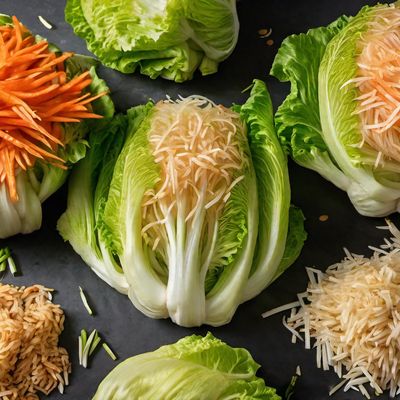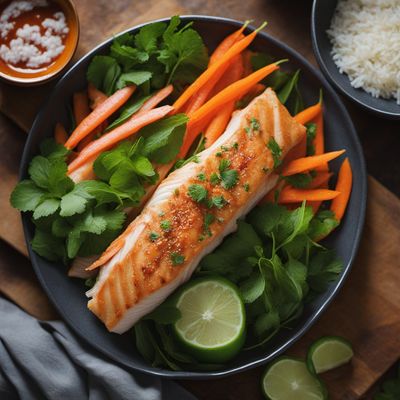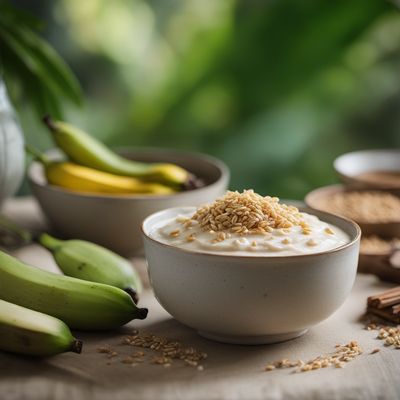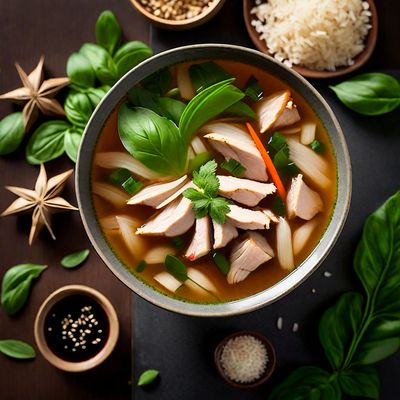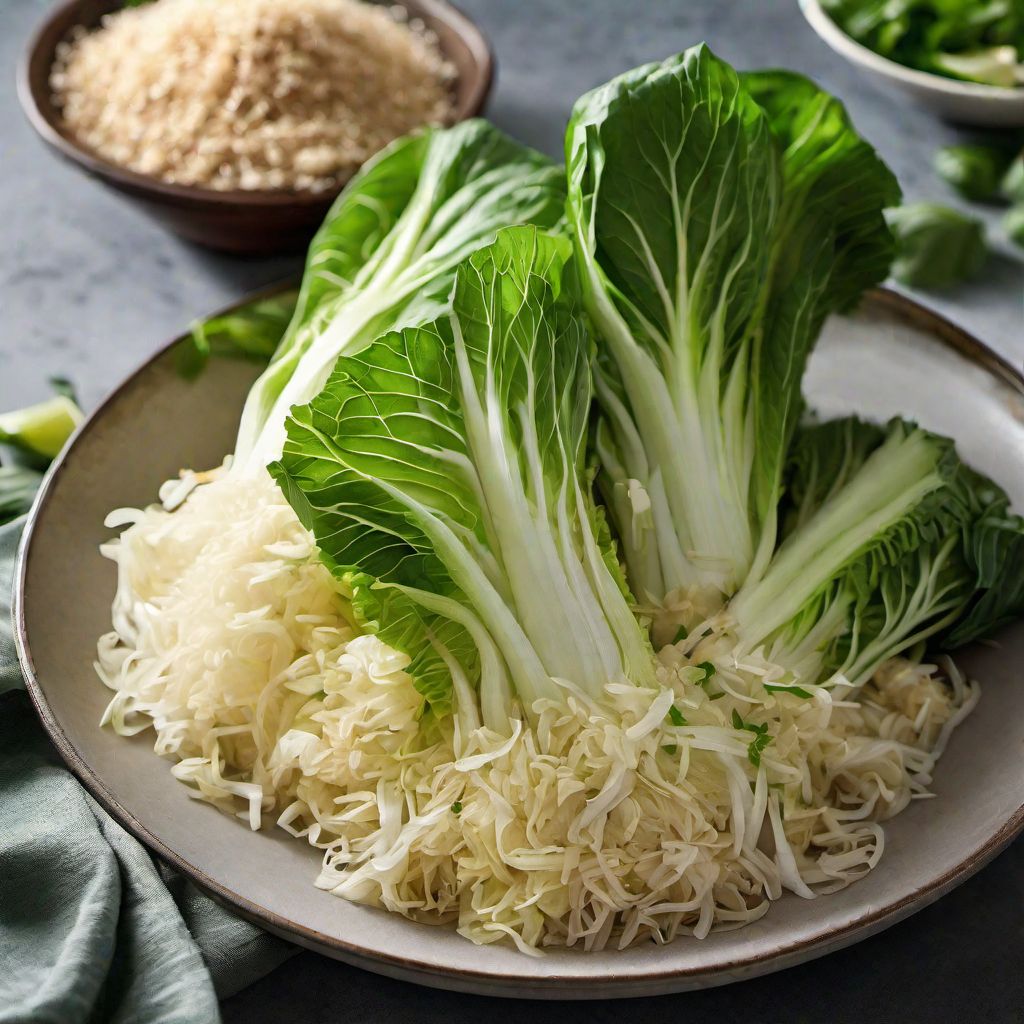
Recipe
Vietnamese-style Kimchi
Tangy and Spicy Vietnamese Kimchi: A Fusion of Flavors
4.8 out of 5
In Vietnamese cuisine, bold and vibrant flavors are key. This Vietnamese-style Kimchi recipe takes the traditional Korean dish and infuses it with the aromatic and zesty elements of Vietnamese cuisine. The result is a tangy and spicy kimchi that will add a burst of flavor to any Vietnamese meal.
Metadata
Preparation time
20 minutes
Cooking time
0 minutes (fermentation time: 1-2 days)
Total time
1-2 days (including fermentation and refrigeration time)
Yields
4 servings
Preparation difficulty
Easy
Suitable for
Vegetarian, Vegan, Gluten-free, Dairy-free, Low calorie
Allergens
Fish (fish sauce)
Not suitable for
Nut-free, Soy-free, Paleo, Keto, Low-carb
Ingredients
While the original Korean kimchi is known for its strong and pungent flavors, Vietnamese-style kimchi incorporates the distinct flavors of Vietnamese cuisine. This adaptation includes the use of Vietnamese chili peppers, fish sauce, and aromatic herbs like cilantro and Thai basil. The result is a kimchi that is both spicy and refreshing, with a unique Vietnamese twist. We alse have the original recipe for Kimchi, so you can check it out.
-
1 medium Napa cabbage, shredded (about 8 cups / 1.9 liters) 1 medium Napa cabbage, shredded (about 8 cups / 1.9 liters)
-
2 tablespoons sea salt 2 tablespoons sea salt
-
2 tablespoons Vietnamese chili paste 2 tablespoons Vietnamese chili paste
-
2 tablespoons fish sauce 2 tablespoons fish sauce
-
1 tablespoon sugar 1 tablespoon sugar
-
2 cloves garlic, minced 2 cloves garlic, minced
-
1 tablespoon grated ginger 1 tablespoon grated ginger
-
2 green onions, thinly sliced 2 green onions, thinly sliced
-
1/4 cup chopped cilantro 1/4 cup chopped cilantro
-
1/4 cup chopped Thai basil 1/4 cup chopped Thai basil
Nutrition
- Calories (kcal / KJ): 45 kcal / 188 KJ
- Fat (total, saturated): 0.5g, 0g
- Carbohydrates (total, sugars): 9g, 5g
- Protein: 2g
- Fiber: 3g
- Salt: 2.5g
Preparation
-
1.Place the shredded Napa cabbage in a large bowl and sprinkle with sea salt. Massage the salt into the cabbage for about 5 minutes to help release its moisture.
-
2.Rinse the cabbage under cold water to remove excess salt. Drain well and set aside.
-
3.In a separate bowl, combine the Vietnamese chili paste, fish sauce, sugar, minced garlic, and grated ginger. Mix well to create a paste.
-
4.Add the paste to the drained cabbage and mix until the cabbage is evenly coated.
-
5.Add the sliced green onions, chopped cilantro, and chopped Thai basil to the cabbage mixture. Toss to combine.
-
6.Transfer the kimchi to a clean jar or airtight container, pressing it down firmly to remove any air bubbles.
-
7.Cover the jar or container and let the kimchi ferment at room temperature for 1 to 2 days.
-
8.After the fermentation period, refrigerate the kimchi for at least 1 week before consuming to allow the flavors to develop.
Treat your ingredients with care...
- Napa cabbage — Make sure to massage the salt into the cabbage well to ensure it releases enough moisture for fermentation.
- Vietnamese chili paste — Adjust the amount according to your desired level of spiciness.
- Fish sauce — Use a high-quality fish sauce for the best flavor.
- Thai basil — If Thai basil is not available, you can substitute it with regular basil.
Tips & Tricks
- For a milder kimchi, reduce the amount of Vietnamese chili paste.
- Allow the kimchi to ferment for longer if you prefer a stronger and more tangy flavor.
- Serve the kimchi as a side dish to complement Vietnamese main dishes.
- Use gloves when massaging the salt into the cabbage to avoid skin irritation from the salt.
Serving advice
Serve the Vietnamese-style kimchi as a side dish alongside traditional Vietnamese dishes such as pho, banh mi, or spring rolls. It adds a spicy and tangy kick to balance out the flavors of the main dishes.
Presentation advice
Transfer the kimchi to a small serving bowl and garnish with a sprinkle of chopped cilantro and Thai basil. The vibrant colors of the herbs will enhance the visual appeal of the dish.
More recipes...
For Kimchi » Browse all
For Korean cuisine » Browse all
More Korean cuisine dishes » Browse all

Jaengban guksu
Jaengban Guksu
Jaengban guksu is a Korean cold noodle dish that is perfect for hot summer days. It is made with thin wheat noodles, a variety of vegetables, and...

Mu wan
Braised Pork Belly
Mu wan is a traditional Chinese dish that is perfect for any occasion. It is a pork belly that has been braised in a soy sauce and sugar mixture,...

Dakjuk
Chicken Porridge
Dakjuk is a Korean chicken and rice porridge that is often served as a comfort food during cold weather or when someone is feeling under the...
More Vietnamese cuisine dishes » Browse all

Bánh trôi
Bánh trôi is a traditional Vietnamese dessert that is typically served during special occasions such as weddings and Lunar New Year. It consists...

Bánh mì ốp la
Vietnamese Fried Egg Sandwich
Bánh mì ốp la is a Vietnamese breakfast sandwich that consists of a baguette filled with eggs and various toppings.

Bánh mì chả cá
Fish Cake Vietnamese Sandwich
Bánh mì chả cá is a Vietnamese sandwich that is made with a baguette filled with fish cakes, vegetables, and sauces. It is a popular street food...

